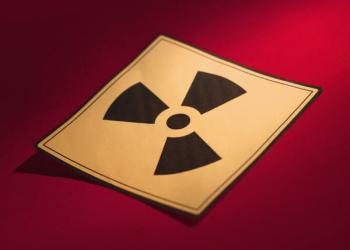Terrorist use of an RDD often called "dirty nuke" or "dirty bomb" is considered far more likely than use of a nuclear explosive device. An RDD combines a conventional explosive device such as a bomb with radioactive material. It is designed to scatter dangerous and sub-lethal amounts of radioactive material over a general area. Such RDDs appeal to terrorists because they require limited technical knowledge to build and deploy compared to a nuclear device. Also, the radioactive materials in RDDs are widely used in medicine, agriculture, industry and research, and are easier to obtain than weapons grade uranium or plutonium.
The primary purpose of terrorist use of an RDD is to cause psychological fear and economic disruption. Some devices could cause fatalities from exposure to radioactive materials. Depending on the speed at which the area of the RDD detonation was evacuated or how successful people were at sheltering-in-place.

The size of the affected area and the level of destruction caused by an RDD would depend on the sophistication and size of the conventional bomb, the type of radioactive material used, the quality and quantity of the radioactive material, and the local meteorological conditions - primarily wind and precipitation. The area affected could be placed off-limits to the public for several months during cleanup efforts.
Before an RDD Event
- To begin preparing, you should build an emergency kit and make a family communications plan.
- Find out from officials if any public buildings in your community have been designated as fallout shelters. If none have been designated, make your own list of potential shelters near your home, workplace and school. These places would include basements or the windowless center area of middle floors in high-rise buildings, as well as subways and tunnels.
- If you live in an apartment building or high-rise, talk to the manager about the safest place in the building for shelter. During periods of heightened threat increase your disaster supplies to be adequate for up to two weeks.
Taking shelter during a RDD event is absolutely necessary. There are two kinds of shelters - blast and fallout. The following describes the two kinds of shelters:
- Blast shelters are specifically constructed to offer some protection against blast pressure, initial radiation, heat and fire. But even a blast shelter cannot withstand a direct hit from a nuclear explosion.
- Fallout shelters do not need to be specially constructed for protecting against fallout. They can be any protected space, provided that the walls and roof are thick and dense enough to absorb the radiation given off by fallout particles.
During an RDD Event
Outdoors:
- Seek shelter indoors immediately in the nearest undamaged building. If appropriate shelter is not available, cover your nose and mouth and move as rapidly as is safe upwind, away from the location of the explosive blast. Then, seek appropriate shelter as soon as possible.
- Listen for official instructions and follow directions.
Indoors:
- Seek shelter immediately, preferably underground or in an interior room of a building, placing as much distance and dense shielding as possible between you and the outdoors where the radioactive material may be.
- If you have time, turn off ventilation and heating systems, close windows, vents, fireplace dampers, exhaust fans, and clothes dryer vents. Retrieve your disaster supplies kit and a battery-powered radio and take them to your shelter room.
- Seal windows and external doors that do not fit snugly with duct tape to reduce infiltration of radioactive particles. Plastic sheeting will not provide shielding from radioactivity nor from blast effects of a nearby explosion.
- Listen for official instructions and follow directions.
After a Nuclear Blast
Keep listening to the radio and television for news about what to do, where to go and places to avoid.
After finding safe shelter, those who may have been exposed to radioactive material should decontaminate themselves. To do this, remove and bag your clothing (and isolate the bag away from you and others), and shower thoroughly with soap and water. Seek medical attention after officials indicate it is safe to leave shelter.
Contamination from an RDD event could affect a wide area, depending on the amount of conventional explosives used, the quantity and type of radioactive material released, and meteorological conditions. Thus, radiation dissipation rates vary, but radiation from an RDD will likely take longer to dissipate due to a potentially larger localized concentration of radioactive material.
